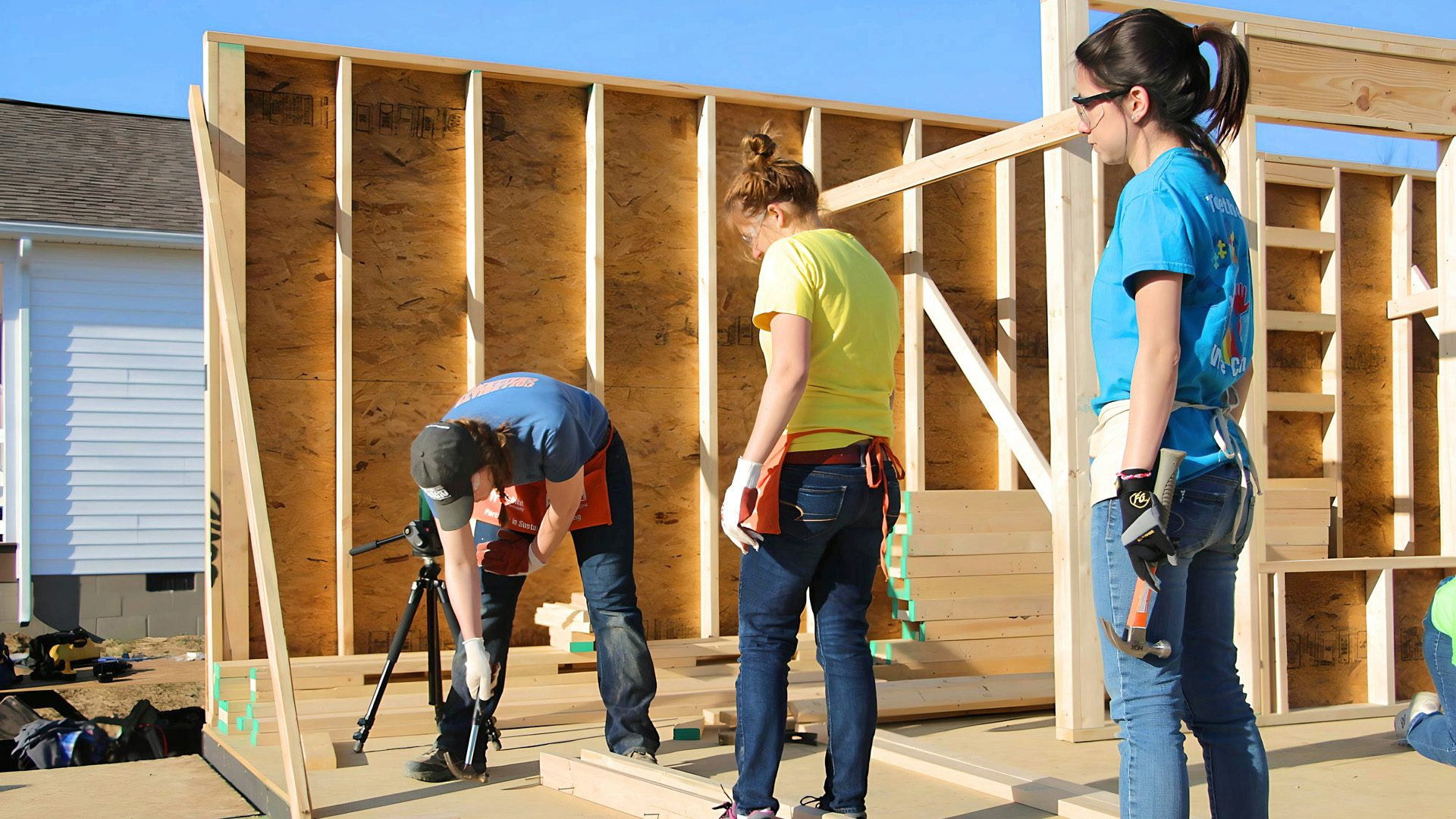The complete UK self-build beginner’s guide
Beginners starting a self-build house in the UK are attracted by ability to personalise their homd and love that a DIY house offers potential cost savings of 40-50% compared to buying an existing home, but it requires careful consideration of your readiness, extensive planning, and realistic expectations. With approximately 16,000 self-build completions annually representing 7-8% of UK housing output, this growing sector attracts those seeking personalized homes, though success demands specific qualities and thorough preparation.

Is self-building right for you?
Self-building suits individuals with exceptional patience, strong problem-solving abilities, and high stress tolerance. The typical project spans 18-24 months from land acquisition to completion, requiring 2-3 hours of daily project management during construction phases. You’ll need emotional resilience to handle setbacks, weather delays, and unexpected complications that affect virtually every project.
Financial readiness remains paramount – beyond the basic build budget, you’ll need 10-20% contingency funds and bridge financing capability between mortgage stage releases. Most self-build mortgages release funds after work completion rather than before, creating cash flow challenges. Your risk tolerance must accommodate potential cost overruns ranging from 10-400% in extreme cases, with budget management cited as the primary challenge by experienced self-builders.
The impact on family life proves substantial. Projects disrupt normal routines for nearly two years, potentially requiring temporary accommodation during construction. Strong family support and understanding become essential, as social life often takes a backseat to project demands. Consider whether your lifestyle can accommodate these disruptions before committing.
Understanding your self-build options
Traditional brick and block construction remains the most common choice, familiar to local contractors and building control officers. These builds typically take 10-12 months at £1,200-£1,800 per m², offering good thermal mass and acoustic performance. However, weather dependency and longer timelines present challenges.
Timber frame systems accelerate construction significantly, with the shell erected in 1-3 weeks. At £1,100-£1,600 per m², they offer excellent quality control through factory manufacturing and superior thermal performance. The trade-off involves early design commitment and potential moisture risks during construction.
Modern methods like ICF (Insulating Concrete Formwork) enable rapid shell construction in just days. Costing £1,300-£1,900 per m², ICF provides exceptional thermal performance and weather-resistant construction. SIPS (Structural Insulated Panels) offer similar speed advantages at £1,200-£1,700 per m², though both require specialized knowledge and precise foundations.
For those considering conversions, barn transformations under Class Q permitted development can fast-track planning approval to 8-13 weeks. However, structural limitations, protected species issues, and building regulations compliance add complexity. Conversion costs range from £800-£1,500 per m² plus the base structure purchase.
The realities of UK self-building
Fewer than 10% of self-builders physically construct their homes – most act as project managers coordinating professional trades. This shift from the traditional DIY image reflects the complexity of modern building regulations and the false economy of amateur work on critical systems.
Demographics have evolved significantly. Today’s self-builders typically come from professional backgrounds with higher incomes and existing property equity. The sector has transformed from necessity-driven to choice-driven, with retirees forming an increasing proportion seeking bespoke retirement homes.
Success rates vary dramatically based on project management quality. High-performing teams complete 89% of projects successfully, while poor organization leads to just 36% success rates. The construction industry’s assessment that 75% of projects are “doomed from the start” highlights the importance of thorough planning and professional support.
Realistic timeline expectations
Planning permission alone often extends 8-16 weeks for straightforward applications, with 51% of builders waiting over a year for complex projects. Only 1% secure approval within three months, making early engagement with planning officers essential.
Construction timelines vary significantly by build method. Traditional builds require 10-12 months from foundations to completion, while timber frame and modern methods can reduce this to 6-9 months. However, pre-construction activities including design development, planning applications, and contractor selection typically add 6-18 months before breaking ground.
Weather impact remains substantial, particularly for traditional builds. Industry professionals recommend adding 15% buffer time for weather delays, with foundation work best scheduled for drier months. Material shortages post-2020 have added further uncertainty, making flexible scheduling essential.
Financial planning essentials
Build costs for 2024-2025 average £1,775-£3,000 per m² excluding land and VAT. London commands a 30-40% premium at £2,500-£3,500 per m², while northern regions offer 5-10% savings below the national average. Land typically represents 30-40% of total project cost, ranging from £50,000 in rural areas to £500,000+ in London and the South East.
Professional fees add 10-20% to construction costs. Architects charge 6-15% of build cost, structural engineers 1-2%, and project managers 5-8%. Planning applications cost £528 for householder applications, with building control fees adding £1,200-£2,500 for a standard three-bedroom house.
Hidden costs catch many first-timers unprepared. Utility connections for edge-of-settlement plots average £20,000-£30,000, temporary site facilities add £300-£700 monthly, and professional assessments for SAP calculations, air pressure testing, and CDM compliance total several thousand pounds.
Self-build mortgages differ fundamentally from standard home loans. Most operate on arrears payment, releasing funds after stage completion, requiring significant working capital. Specialist lenders like Ecology, Suffolk, and Beverley Building Societies offer 75-85% loan-to-value ratios, though deposits of 25-50% remain typical. The VAT reclaim scheme allows recovery of 20% on eligible materials for new builds, providing valuable cash injection post-completion.
Navigating challenges and pitfalls
Budget overruns top the challenge list, stemming from poor initial planning (affecting 31.4% of projects), unrealistic estimates, and scope creep. Maintaining a 15-20% contingency fund proves essential, along with professional quantity surveyor input and working backward from available funds rather than fitting budgets to aspirational designs.
Planning delays plague the sector, with inflexible local policies and preference for “safe” designs creating particular frustration. Engaging planning consultants with local knowledge, pursuing pre-application advice, and thoroughly researching local policies before land purchase help navigate this minefield.
Project management difficulties arise from poor communication and resource availability issues. The sobering statistic that one hour of project management is needed per seven hours of on-site work underscores the time commitment required. Professional project managers, though costing 5-8%, often prove worthwhile for complex builds.
Legal requirements simplified
Planning permission must be secured before construction begins, obtained through your local planning authority. Pre-application advice, though optional, significantly improves approval chances. The process typically takes 8-16 weeks for straightforward applications.
Building regulations represent a separate approval system ensuring safety and performance standards. Full plans applications are recommended for complex builds, requiring detailed drawings submitted before work commences. Local authority building control or approved inspectors conduct staged inspections throughout construction.
The CDM (Construction Design and Management) Regulations 2015 apply to all self-builds. While domestic clients aren’t directly responsible, duties transfer to your principal contractor. Multi-contractor projects require appointment of both principal designer and principal contractor roles.
Structural warranties from providers like NHBC, LABC, or Premier Guarantee are typically required by mortgage lenders. These 10-year policies protect against structural defects, with self-build specific providers like Self-Build Zone offering tailored coverage.
Skills assessment – DIY versus professionals
Suitable DIY tasks include site clearing, basic landscaping, painting and decorating, non-structural tiling, and general project management activities. These can save 40-50% on labor costs while avoiding critical path delays.
Professional certification remains mandatory for structural work, electrical installations (Part P compliance), gas work (Gas Safe registration), plumbing involving mains connections, and roofing systems. Building regulations, warranty requirements, and insurance validity often depend on professional installation of these elements.
The false economy of amateur work on critical systems becomes apparent when considering rectification costs, warranty invalidation, and potential safety issues. Focus DIY efforts on finishing work and project coordination while engaging certified professionals for technical installations.
Support resources and next steps
The National Custom and Self Build Association (NaCSBA) serves as the primary industry body, offering policy advocacy, member directories, and the Self Build Portal (selfbuildportal.org.uk). Their Right to Build Task Force supports local authorities in meeting their plot provision duties.
The National Self Build & Renovation Centre in Swindon offers permanent exhibitions, 3-day comprehensive courses (£395), and access to 200+ suppliers. Regional self-build groups provide local knowledge and peer support, particularly valuable in Scotland where 15% of homes are self-built.
Over 50,000 people have registered on Right to Build registers since 2016, though this likely underestimates demand. Local authorities must grant sufficient planning permissions to meet registered demand within three years, creating opportunities for prospective self-builders.
Making your decision
Success in self-building requires honest self-assessment across personality traits, financial capacity, time availability, and family support. The rewards—creating your ideal home while potentially saving 40-50%—must be weighed against 18-24 months of disruption, significant stress, and financial risk.
Begin by attending self-build shows, connecting with experienced self-builders through forums, and realistically assessing your risk tolerance. If proceeding, prioritize professional support for complex elements while maintaining hands-on project management. Remember that fewer than 10% of successful self-builders physically construct their homes—your role centers on coordination, decision-making, and quality control rather than wielding tools.
The UK self-build sector continues growing despite challenges around planning delays, skill shortages, and complex regulations. For those with appropriate qualities and preparation, it offers the unique opportunity to create a truly personalized home. Success lies not in doing everything yourself, but in understanding your limitations, engaging the right professionals, and maintaining realistic expectations throughout this challenging yet potentially rewarding journey.
